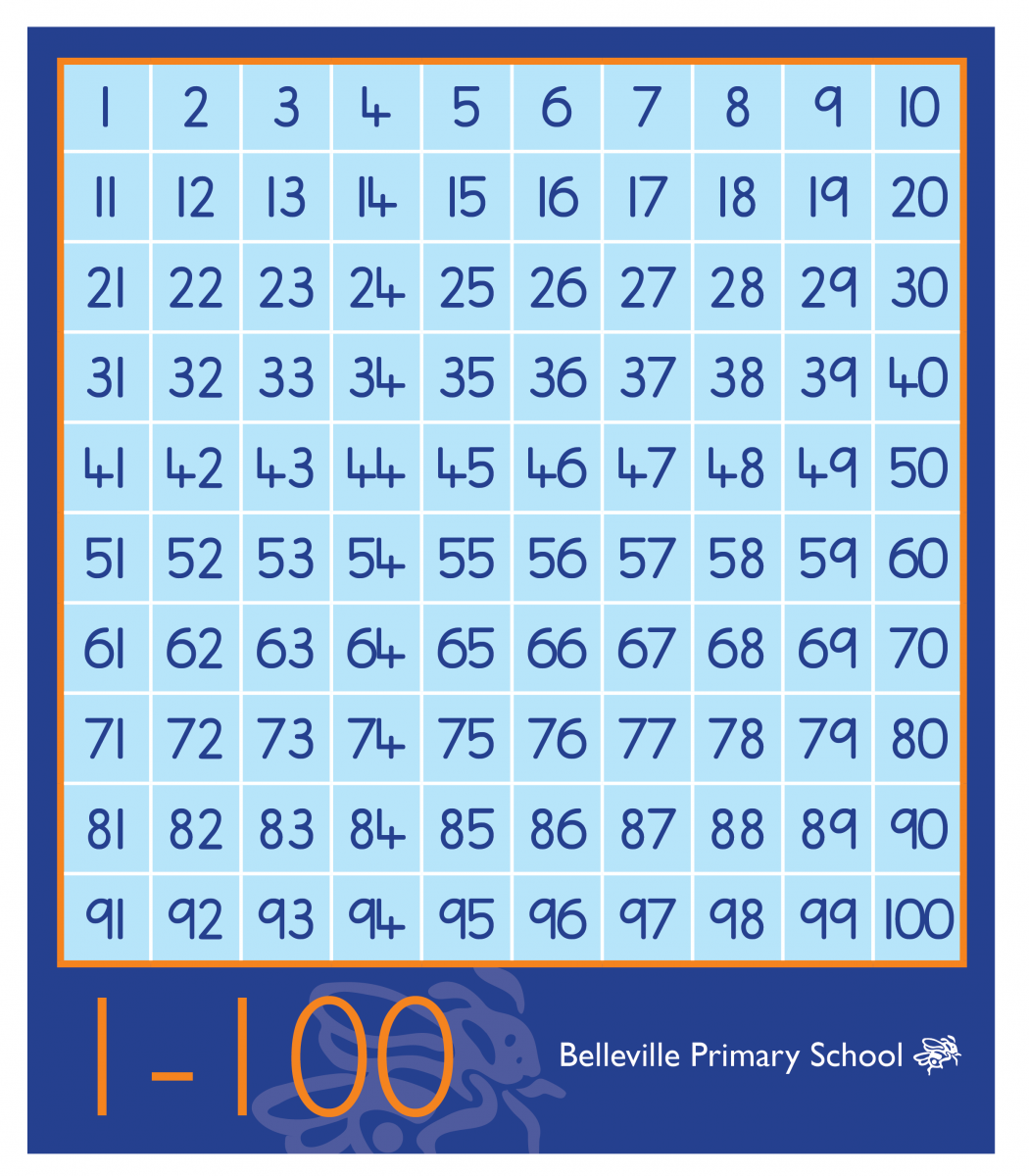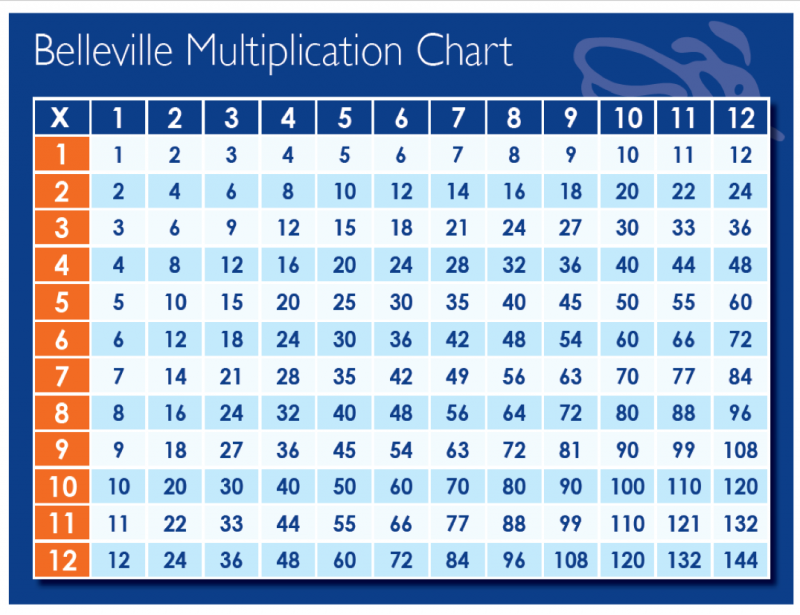Strategies for learning multiplication tables
.jpg)
.jpg)
.jpg)
 Count on in ‘jumps’ to add equal groups. For example, if your child is learning the 4x table, get them to count in 4s, colouring each number as they go. This will help them to start memorising the answers in the 4x table. They will also find that a pattern will appear.
Count on in ‘jumps’ to add equal groups. For example, if your child is learning the 4x table, get them to count in 4s, colouring each number as they go. This will help them to start memorising the answers in the 4x table. They will also find that a pattern will appear.
Using dried beans, buttons, pegs, dried pasta or something similar, show how times tables are made of groups, 1 group of 4 (1 x 4), 2 groups of 4 (2 x 4), 3 groups of 4 (3 x 4), etc. Spend as much time with the manipulatives as possible. Physically grouping and sharing the objects creates a solid foundation for understanding the meaning of multiplication and division facts. This is a valuable process regardless of your child’s age.
Encourage children to look for patterns to help remember times tables. There are lots of patterns to look for. For example, in the 10 times table all the answers end in 0 and in the 5 times table all the answers end in 5 or 0. Any number multiplied by an even number will be even. Show children that the answers for the 4 times table are the answers to the 2 times table doubled: for example, 3 × 4 = 3 × 2 × 2. Likewise, the answers for the 8 times table are the answers to the 4 times table doubled.
When they come to the 3, 6 and 9 times tables, children may see that the digits of each answer add together to make 3, 6 or 9, or a multiple of those numbers.
In the 9 times table they will also see a pattern in the tens and ones, with the tens increasing and the ones decreasing as you go up the times table.
Finding fact families (inverse and commutativity) is useful for children learning times tables because it shows that they know more than they might think! When writing a multiplication, the numbers being multiplied can be written in any order. So if a child knows that 2 × 8 = 16, they also know that 8 × 2 = 16.
For every multiplication fact there are related division facts – the inverse. So if a child knows that 2 × 8 = 16, they also know that 16 ÷ 2 = 8.
Lastly, if a child knows that 16 ÷ 2 = 8, they also know that 16 ÷ 8 = 2. That’s commutativity.
Speaking too much while you’re demonstrating can overload your child’s capacity to take on and assimilate new information. Let your children learn through the use of the manipulatives. However, use the correct times table vocabulary when you talk to your child. ‘…groups of…’ (KS1 & 2), ‘factor’ (KS2), ‘multiple’ (KS2).
It’s important that children regularly write out the times tables, in addition to saying them out loud but you should also try to incorporate physical movement when reciting the times tables. For example, when practising the 5 times table, ask your children to give their answers using ‘hi-fives’ for the appropriate number of times.
Being able to navigate from one multiplication fact to another is a crucial element of mastering them. Once pupils start to familiarise themselves with how to associate number facts, you could use the following types of questions:
How does knowing 5 × 4 = 20 help you work out 6 × 4? (6 x 4 = 5 x 4 + 4)
I know that 10 × 7 = 70, how can I use that to find 9 × 7? (9 x 7 = 10 x 7 – 7)
If I know that 20 × 3 = 60, what else do I know?
You could also ask the children to make posters, collages, displays and other artwork that illustrates a particular times tables or group of times tables or division facts. Children could use stickers, buttons, beads and even types of food for groups and arrays. Other creative options include getting children to make times table fortune tellers, multiplication flower wheels and customised times tables booklets.
Cut some card into 24 identical pieces, and write out all the questions for one times table or set of related division facts on 12 of the cards. Then write the answers on the other 12 cards. Spread them out on a table and see if your child can match them all up correctly. Once they are more confident, time them with a stopwatch. See if they can try to beat their own record each time they do it!
When a child struggles with a particular multiplication fact, for example 9 x 8 = 72, encourage them to make a flashcard with the question on one side and the answer on the other. They can then stick it on their fridge or bedroom wall as a helpful reminder. Or they could draw it in bubble writing with marker pens on a big piece of paper. Stick it up in their room so they see it every time they walk in. You could get them to say it in a silly voice every time they see it, which should help them to remember it even better!
For many children 7 x 8 poses a particular problem, combining as it does both the 7 and 8 times tables. Fortunately, there is a very simple way of remembering this times table. Simply place the answer first and count on: 56 = 7 x 8. Another trick that can be helpful with the harder times tables is using square numbers, as the numbers can be used as a framework for mastering other multiplication facts. For example, if a child needs to answer 7 × 6 and knows that 6 × 6 = 36, they can work out the answer by adding 6 to 36.
It is possible that some children will continue to struggle with a particular times table, in which case, there are a few final tricks that can help. Perhaps the most well-known example is the trick for finding the answers in the 9 times table, up to 10 × 9, whereby you use your fingers to demonstrate the changes in the tens and ones. There are many tricks shown on the internet that can be used to support different times tables.

Songs, rhymes, raps and stories are all useful tools for helping children memorise multiplication facts. There are many more available on the internet. Alternatively, you could encourage pupils to make up their own songs and rhymes, perhaps even with added dance moves.
One example is the classic shopping memory game that can be adapted to enable children to practise times tables: ‘I went to the shop and I bought …’, followed by the first number in the times table sequence you want to practise, ‘two’, for example, together with some items. ‘I went to the shop and I bought two apples’. Children can continue repeating the items on the shopping list and adding more items according to the chosen times table, ‘…four bananas’, ‘…six oranges…’, etc.
Giving children a variety of strategies for learning times tables means there is room for using traditional chanting approach too.
1 times 3 is 3! 2 times 3 is 6! 3 times 3 is 9!….
Skip-counting is counting while skipping one or more numbers in a pattern. To skip count by 5, count every fifth number, 5, 10, 15, 20, and so on. Skip-counting is also called “counting by 5s, 2, 7s, etc.”
Repetition is important. It is useful therefore to make time to practise times tables every day, even after the basic order has been learnt.
Shade in each of the times tables you have learned.
http://www.primaryhomeworkhelp.co.uk/maths/timestable/index.html
https://www.math-drills.com/multiplication.php
https://www.topmarks.co.uk/maths-games/hit-the-button
https://www.mathplayground.com/balloon_invaders.html
Times table toons on Mathletics
